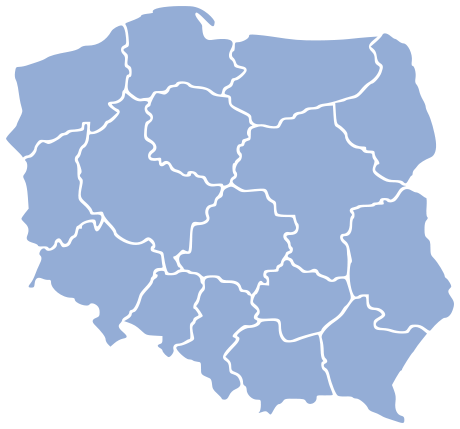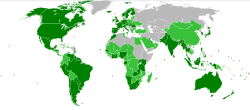Poland
| Republic of Poland
Rzeczpospolita Polska
|
||||||
|---|---|---|---|---|---|---|
|
||||||
| Motto: None[a] | ||||||
| Anthem: Mazurek Dąbrowskiego (Dąbrowski's Mazurka) |
||||||
![Location of �Poland��(dark green)–�on the European continent��(light green &�dark grey)–�in the European Union��(light green)� —� [Legend]](/2010-wikipedia_en_wp1-0.8_orig_2010-12/I/250px-EU-Poland.svg.png) Location of Poland (dark green)
– on the European continent (light green & dark grey) |
||||||
| Capital (and largest city) |
Warsaw |
|||||
| Official language(s) | Polish[b] | |||||
| Demonym | Pole/Polish | |||||
| Government | Parliamentary republic | |||||
| - | President | Bronisław Komorowski | ||||
| - | Prime Minister | Donald Tusk | ||||
| Formation | ||||||
| - | Christianisation[c] | 966 | ||||
| - | First Republic | July 1, 1569 | ||||
| - | Second Republic | November 11, 1918 | ||||
| - | People's Republic | December 31, 1944 | ||||
| - | Third Republic | January 30, 1990 | ||||
| EU accession | 1 May 2004 | |||||
| Area | ||||||
| - | Total | 312,685 km2 [d](69th) 120,696.41 sq mi |
||||
| - | Water (%) | 3.07 | ||||
| Population | ||||||
| - | June 2010 estimate | 38,192,000[1] (34th) | ||||
| - | December 2007 census | 38,116,000[2] (34th) | ||||
| - | Density | 120/km2 (83rd) 319.9/sq mi |
||||
| GDP (PPP) | 2009 estimate | |||||
| - | Total | $688.761 billion[3] | ||||
| - | Per capita | $18,072[3] | ||||
| GDP (nominal) | 2009 estimate | |||||
| - | Total | $430.197 billion[3] | ||||
| - | Per capita | $11,288[3] | ||||
| Gini (2002) | 34.5 | |||||
| HDI (2007-) | ||||||
| Currency | Złoty (PLN) |
|||||
| Time zone | CET (UTC+1) | |||||
| - | Summer (DST) | CEST (UTC+2) | ||||
| Drives on the | right | |||||
| Internet TLD | .pl | |||||
| Calling code | 48 | |||||
| 1 | ^a See, however, Unofficial mottos of Poland. | |||||
| 2 | ^b Although not official languages, Belarusian, Kashubian, Lithuanian and German are used in 20 communal offices. | |||||
| 3 | ^c The adoption of Christianity in Poland is seen by many Poles, regardless of their religious affiliation or lack thereof, as one of the most significant national historical events; the new religion was used to unify the tribes in the region. | |||||
| 4 | ^d The area of Poland according to the administrative division, as given by the Central Statistical Office, is 312,679 km2 (120,726 sq mi) of which 311,888 km2 (120,421 sq mi) is land area and 791 km2 (305 sq mi) is internal water surface area.[2] | |||||
Poland /ˈpəʊlənd/ (Polish: Polska), officially the Republic of Poland (Rzeczpospolita Polska), is a country in Central Europe [5][6] bordered by Germany to the west; the Czech Republic and Slovakia to the south; Ukraine, Belarus and Lithuania to the east; and the Baltic Sea and Kaliningrad Oblast, a Russian exclave, to the north. The total area of Poland is 312,679 square kilometres (120,726 sq mi),[2] making it the 69th largest country in the world and the 9th largest in Europe. Poland has a population of over 38 million people,[2] which makes it the 34th most populous country in the world[7] and the sixth most populous member of the European Union.
The establishment of a Polish state is often identified with the adoption of Christianity by its ruler Mieszko I in 966, when the state covered territory similar to that of present-day Poland. The Kingdom of Poland was formed in 1025, and in 1569 it cemented a long association with the Grand Duchy of Lithuania by signing the Union of Lublin, forming the Polish–Lithuanian Commonwealth.
The Commonwealth collapsed in 1795, and Poland's territory was partitioned among the Kingdom of Prussia, the Russian Empire, and Austria. Poland regained its independence as the Second Polish Republic in 1918, after World War I, but two decades later it was occupied by Nazi Germany and the Soviet Union at the outbreak of World War II in September 1939. Poland lost over six million citizens in the war and emerged several years later as the People's Republic of Poland under Soviet influence.
During the Revolutions of 1989, communist rule was overthrown, and soon after Poland became what is constitutionally known as the "Third Polish Republic". Poland is a unitary state, made up of sixteen Voivodeships (Polish: Województwo), Poland is a member of the European Union, NATO, the United Nations, the World Trade Organization, and the Organisation for Economic Co-operation and Development (OECD).
Contents |
Etymology
The source of the name Poland[8] and the ethnonyms for the Poles[9] include endonyms (the way Polish people refer to themselves and their country) and exonyms (the way other peoples refer to the Poles and their country). Endonyms and most exonyms for Poles and Poland derive from the name of the West Slavic tribe of Polans (Polanie), while in some languages the exonyms for Poland derive from the name of another tribe – the Lendians (Lędzianie).
History
Prehistory
Historians have postulated that throughout Late Antiquity, many distinct ethnic groups populated the regions of what is now known as Poland. The ethnicity and linguistic affiliation of these groups has been hotly debated; in particular the time and route of the original settlement of Slavic peoples in these regions has been the subject of much controversy.
The most famous archeological find from Poland's prehistory and protohistory is the Biskupin fortified settlement (now reconstructed as a museum), dating from the Lusatian culture of the early Iron Age, around 700 BC.
Piast dynasty
Poland began to form into a recognizable unitary and territorial entity around the middle of the 10th century under the Piast dynasty. Poland's first historically documented ruler, Mieszko I, was baptized in 966, adopting Catholic Christianity as the nation's new official religion, to which the bulk of the population converted in the course of the next centuries. In the 12th century, Poland fragmented into several smaller states. In 1320, Władysław I became the King of a reunified Poland. His son, Casimir III, is remembered as one of the greatest Polish kings.
Poland was also a centre of migration of peoples. The Jewish community began to settle and flourish in Poland during this era (see History of the Jews in Poland). The Black Death which affected most parts of Europe from 1347 to 1351 did not reach Poland.[10]
Jagiellon dynasty
Under the Jagiellon dynasty Poland forged a union with its neighbour, the Grand Duchy of Lithuania. In 1410, a Polish-Lithuanian army inflicted a decisive defeat on the Teutonic Knights, both countries' main adversary, in the battle of Grunwald. After the Thirteen Years' War, the Knight's state became a Polish vassal. The Jagiellons at one point also established dynastic control over the kingdoms of Bohemia (1471 onwards) and Hungary (from 1490 onwards).[11]
Polish culture and economy flourished under the Jagiellons, and the country produced such figures as astronomer Nicolaus Copernicus and poet Jan Kochanowski. Compared to other European nations, Poland was exceptional in its tolerance of religious dissent, allowing the country to avoid the religious turmoil that spread over Western Europe at that time. Seventy-five Tatar raids were recorded into Poland and Lithuania between 1474–1569.[12] Some historians estimate that Crimean Tatar slave-raiding cost Poland one million of its population from 1494 to 1694.[13]
Polish-Lithuanian Commonwealth
A golden age ensued during the sixteenth century after the Union of Lublin which gave birth to the Polish–Lithuanian Commonwealth. The szlachta (nobility) of Poland, far more numerous than in Western European countries, took pride in their freedoms and parliamentary system. For 10 years between 1619 and 1629 the Polish-Lithuanian Commonwealth was at its greatest geographical extent in history, incorporating most of what today is Poland, Ukraine, Belarus, Lithuania, Latvia, Estonia, and some parts of modern Russia. The period starts in 1619 when the Russo-Polish Truce of Deulino came into effect, whereby Russia conceded Commonwealth control over Smolensk and several other border territories. In 1629 the Swedish-Polish Truce of Altmark came into effect, whereby the Commonwealth conceded Swedish control over most of Livonia, which the Swedes had invaded in 1626.
In the mid-seventeenth century, a Swedish invasion ("The Deluge") and the Cossacks' Chmielnicki Uprising which ravaged the country marked the end of the golden age. Famines and epidemics followed hostilities, and the population dropped from roughly 11 to 7 million.[14]
Numerous wars against Russia coupled with government inefficiency caused by the Liberum veto—a right which had allowed any member of the parliament to dissolve it and to veto any legislation it had passed—marked the steady deterioration of the Commonwealth from a European power into a near-anarchy controlled by its neighbours. Despite the erosion of its power, the Commonwealth was able to deal a crushing defeat to the Ottoman Empire in 1683 at the Battle of Vienna.
The reforms, particularly those of the Great Sejm, which passed the Constitution of May 3, 1791—the world's second modern constitution and the first in Europe—were thwarted with the three partitions of Poland (1772, 1793, and 1795) which culminated in Poland's being erased from the map of Europe and its territories being divided between Russia, Prussia, and Austria.
Partitions of Poland
Poles rebel several times against the partitioners, particularly near the end of the 18th century and the beginning of the nineteenth century. One of the most famous and successful battle for Poland was at Racławice where Tadeusz Kosciuszko lead peasants and some polish armies into battle against Russia, in 1794. In 1807, Napoleon I of France recreated a Polish state, the Duchy of Warsaw, but after the Napoleonic Wars, Poland was again divided in 1815 by the victorious Allies at the Congress of Vienna. The eastern portion was ruled by the Russian tsar as a Congress Kingdom which possessed a liberal constitution.
However, the tsars soon reduced Polish freedoms, and Russia eventually de facto annexed the country. Later in the nineteenth century, Austrian-ruled Galicia, particularly the Free City of Kraków, became a centre of Polish cultural life.
Reconstitution of Poland
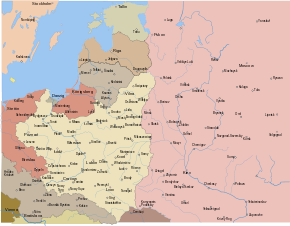
During World War I, all the Allies agreed on the reconstitution of Poland that United States President Woodrow Wilson proclaimed in Point 13 of his Fourteen Points. Shortly after the armistice with Germany in November 1918, Poland regained its independence as the Second Polish Republic (II Rzeczpospolita Polska). It reaffirmed its independence after a series of military conflicts, the most notable being the Polish–Soviet War (1919–1921) when Poland inflicted a crushing defeat on the Red Army.

The 1926 May Coup of Józef Piłsudski turned rule of the Second Polish Republic over to the Sanacja movement.
World War II
The Sanacja movement controlled Poland until the start of World War II in 1939, when Nazi Germany invaded on 1 September and the Soviet invasion of Poland followed by breaking the Soviet–Polish Non-Aggression Pact on 17 September. Warsaw capitulated on 28 September 1939. As agreed in the Molotov–Ribbentrop Pact, Poland was split into two zones, one occupied by Germany while the eastern provinces fell under the control of the Soviet Union.
Of all the countries involved in the war, Poland lost the highest percentage of its citizens: over six million perished, half of them Polish Jews. Poland made the fourth-largest troop contribution to the Allied war effort, after the Soviets, the British and the Americans. The Polish expeditionary corps played an important role in the Italian Campaign, particularly at the Battle of Monte Cassino.
At the war's conclusion, Poland's borders were shifted westwards, pushing the eastern border to the Curzon Line. Meanwhile, the western border was moved to the Oder-Neisse line. The new Poland emerged 20% smaller by 77,500 square kilometres (29,900 sq mi). The shift forced the migration of millions of people, most of whom were Poles, Germans, Ukrainians, and Jews.[15]
Postwar communist Poland


"The 4th of June, 1989 marked a decisive victory for democracy in Poland and, ultimately, across Eastern Europe."
The Soviet Union instituted a new communist government in Poland, analogous to much of the rest of the Eastern Bloc. Military alignment within the Warsaw Pact throughout the Cold War was also part of this change. The People's Republic of Poland (Polska Rzeczpospolita Ludowa) was officially proclaimed in 1952.
In 1956, the régime of Władysław Gomułka became temporarily more liberal, freeing many people from prison and expanding some personal freedoms. A similar situation repeated itself in the 1970s under Edward Gierek, but most of the time persecution of anti-communist opposition persisted.
Labour turmoil in 1980 led to the formation of the independent trade union "Solidarity" ("Solidarność"), which over time became a political force. Despite persecution and imposition of martial law in 1981, it eroded the dominance of the Communist Party and by 1989 had triumphed in parliamentary elections. Lech Wałęsa, a Solidarity candidate, eventually won the presidency in 1990. The Solidarity movement heralded the collapse of communism across Eastern Europe.
Present day Poland
A shock therapy programme of Leszek Balcerowicz during the early 1990s enabled the country to transform its economy into a market economy. As with all other post-communist countries, Poland suffered temporary slumps in social and economic standards, but it became the first post-communist country to reach its pre-1989 GDP levels, which it achieved by 1995 because of its booming economy.[17][18]
Most visibly, there were numerous improvements in human rights, such as the freedom of speech. In 1991, Poland became a member of the Visegrád Group and joined the North Atlantic Treaty Organization (NATO) alliance in 1999 along with the Czech Republic and Hungary. Poles then voted to join the European Union in a referendum in June 2003, with Poland becoming a full member on 1 May 2004.
On April 10, 2010, the President of the Republic of Poland, Lech Kaczyński, along with 89 other high-ranking Polish officials died in a plane crash near Smolensk, Russia.
Geography

Poland’s territory extends across several geographical regions. In the northwest is the Baltic seacoast, which extends from the Bay of Pomerania to the Gulf of Gdansk. This coast is marked by several spits, coastal lakes (former bays that have been cut off from the sea), and dunes. The largely straight coastline is indented by the Szczecin Lagoon, the Bay of Puck, and the Vistula Lagoon. The center and parts of the north lie within the North European Plain.
Rising gently above these lowlands is a geographical region comprising the four hilly districts of moraines and moraine-dammed lakes formed during and after the Pleistocene ice age. These lake districts are the Pomeranian Lake District, the Greater Polish Lake District, the Kashubian Lake District, and the Masurian Lake District. The Masurian Lake District is the largest of the four and covers much of northeastern Poland. The lake districts form part of the Baltic Ridge, a series of moraine belts along the southern shore of the Baltic Sea.
South of the Northern European Lowlands lie the regions of Silesia and Masovia, which are marked by broad ice-age river valleys. Farther south lies the Polish mountain region, including the Sudetes, the Cracow-Częstochowa Upland, the Świętokrzyskie Mountains, and the Carpathian Mountains, including the Beskids. The highest part of the Carpathians is the Tatra Mountains, along Poland’s southern border.
Geology
The geological structure of Poland has been shaped by the continental collision of Europe and Africa over the past 60 million years, on the one hand, and the Quaternary glaciations of northern Europe, on the other. Both processes shaped the Sudetes and the Carpathian Mountains. The moraine landscape of northern Poland contains soils made up mostly of sand or loam, while the ice age river valleys of the south often contain loess. The Cracow-Częstochowa Upland, the Pieniny, and the Western Tatras consist of limestone, while the High Tatras, the Beskids, and the Karkonosze are made up mainly of granite and basalts. The Polish Jura Chain is one of the oldest mountain ranges on earth.
Rivers
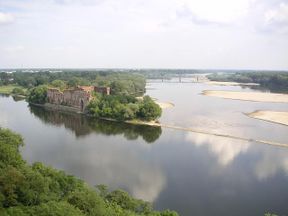
The longest rivers are the Vistula (Polish: Wisła), 1,047 kilometres (651 mi) long; the Oder (Polish: Odra) which forms part of Poland’s western border, 854 kilometres (531 mi) long; its tributary, the Warta, 808 kilometres (502 mi) long; and the Bug, a tributary of the Vistula, 772 kilometres (480 mi) long. The Vistula and the Oder flow into the Baltic Sea, as do numerous smaller rivers in Pomerania.
The Łyna and the Angrapa flow by way of the Pregolya to the Baltic, and the Czarna Hańcza flows into the Baltic through the Neman. While the great majority of Poland’s rivers drain into the Baltic Sea, Poland’s Beskids are the source of some of the upper tributaries of the Orava, which flows via the Váh and the Danube to the Black Sea. The eastern Beskids are also the source of some streams that drain through the Dniester to the Black Sea.
Poland’s rivers have been used since early times for navigation. The Vikings, for example, traveled up the Vistula and the Oder in their longships. In the Middle Ages and in early modern times, when the Polish–Lithuanian Commonwealth was the breadbasket of Europe; the shipment of grain and other agricultural products down the Vistula toward Gdańsk and onward to Western Europe took on great importance.
Lakes

With almost ten thousand closed bodies of water covering more than 1 hectare (2.47 acres) each, Poland has one of the highest number of lakes in the world. In Europe, only Finland has a greater density of lakes. The largest lakes, covering more than 100 square kilometres (39 sq mi), are Lake Śniardwy and Lake Mamry in Masuria, and Lake Łebsko and Lake Drawsko in Pomerania.
In addition to the lake districts in the north (in Masuria, Pomerania, Kashubia, Lubuskie, and Greater Poland), there is also a large number of mountain lakes in the Tatras, of which the Morskie Oko is the largest in area. The lake with the greatest depth—of more than 100 metres (328 ft)—is Lake Hańcza in the Wigry Lake District, east of Masuria in Podlaskie Voivodeship.

Among the first lakes whose shores were settled are those in the Greater Polish Lake District. The stilt house settlement of Biskupin, occupied by more than one thousand residents, was founded before the seventh century BC by people of the Lusatian culture.
The ancestors of today’s Poles, the Polanie, built their first fortresses on islands in these lakes. The legendary Prince Popiel is supposed to have ruled from Kruszwica on Lake Gopło. The first historically documented ruler of Poland, Duke Mieszko I, had his palace on an island in the Warta River in Poznań.
For the most important lakes of Poland, see the Category:Lakes of Poland.
Mountains
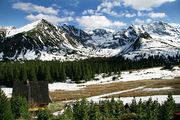
Poland has 21 mountains over 2,000 metres (6,600 ft) in elevation, all in the High Tatras. The Polish Tatras, which consist of the High Tatras and the Western Tatras, is the highest mountain group of Poland and of the entire Carpathian range. In the High Tatras lies Poland’s highest point, the northwestern peak of Rysy, 2,499 metres (8,199 ft) in elevation. At its foot lies the mountain lake Morskie Oko.
The second highest mountain group in Poland is the Beskids, whose highest peak is Babia Góra, at 1,725 metres (5,659 ft). The next highest mountain group is the Karkonosze, whose highest point is Sněžka, at 1,602 metres (5,256 ft). Among the most beautiful mountains of Poland are the Bieszczady Mountains in the far southeast of Poland, whose highest point in Poland is Tarnica, with an elevation of 1,346 metres (4,416 ft).
Tourists also frequent the Gorce Mountains in Gorce National Park, with elevations around 1,300 metres (4,265 ft), and the Pieniny in Pieniny National Park, with elevations around 1,000 metres (3,281 ft). The lowest point in Poland—at 2 metres (6.6 ft) below sea level—is at Raczki Elbląskie, near Elbląg in the Vistula Delta.
For a list of the most important mountain ranges of Poland, see the Category:Mountain ranges of Poland.
Coast
.jpg)
The Polish Baltic coast is approximately 528 kilometres (328 mi) long and extends from Świnoujście on the islands of Usedom and Wolin in the west to Krynica Morska on the Vistula Spit in the east. For the most part, Poland has a smooth coastline, which has been shaped by the continual movement of sand by currents and winds from west to east. This continual erosion and deposition has formed cliffs, dunes, and spits, many of which have migrated landwards to close off former lagoons, such as Łebsko Lake in Słowiński National Park.
The largest spits are Hel Peninsula and the Vistula Spit. The largest Polish Baltic island is Wolin. The largest port cities are Gdynia, Gdańsk, Szczecin, and Świnoujście. The main coastal resorts are Sopot, Międzyzdroje, Kołobrzeg, Łeba, Władysławowo, and the Hel Peninsula.
Desert
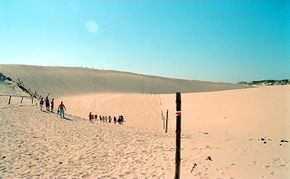
Błędów Desert is a desert located in southern Poland in the Silesian Voivodeship and stretches over the Zagłębie Dąbrowskie region. It has a total area of 32 square kilometres (12 sq mi). It is the only desert located in Poland. It is one of only five natural deserts in Europe. It is the warmest desert that appears at this latitude.
It was created thousands of years ago by a melting glacier. The specific geological structure has been of big importance. The average thickness of the sand layer is about 40 metres (131 ft), with a maximum of 70 metres (230 ft), which made the fast and deep drainage very easy.
The sea’s activity in Słowiński National Park created sand dunes which in the course of time separated the bay from the Baltic Sea. As waves and wind carry sand inland the dunes slowly move, at a speed of 3 to 10 metres (9.8 to 32.8 ft) meters per year. Some dunes are quite high – up to 30 metres (98 ft). The highest peak of the park — Rowokol (115 metres / 377 feet above sea level) — is also an excellent observation point.
Land use

Forests cover 28.8% of Poland’s land area. More than half of the land is devoted to agriculture. While the total area under cultivation is declining, the remaining farmland is more intensively cultivated.
More than 1% of Poland’s territory, 3,145 square kilometres (1,214 sq mi), is protected within 23 national parks. In this respect, Poland ranks first in Europe. Three more national parks are projected for Masuria, the Cracow-Częstochowa Upland, and the eastern Beskids. Most Polish national parks are located in the southern part of the country. In addition, wetlands along lakes and rivers in central Poland are legally protected, as are coastal areas in the north. There are over 120 areas designated as landscape parks, along with numerous nature reserves and other protected areas.
Flora and fauna

Phytogeographically, Poland belongs to the Central European province of the Circumboreal Region within the Boreal Kingdom. According to the World Wide Fund for Nature, the territory of Poland can be subdivided into three ecoregions: the Baltic mixed forests, Central European mixed forests and Carpathian montane conifer forests.
Many animals that have since died out in other parts of Europe still survive in Poland, such as the wisent in the ancient woodland of the Białowieża Forest and in Podlachia. Other such species include the brown bear in Białowieża, in the Tatras, and in the Beskids, the gray wolf and the Eurasian Lynx in various forests, the moose in northern Poland, and the beaver in Masuria, Pomerania, and Podlachia.

In the forests, one also encounters game animals, such as Red Deer, Roe Deer and Wild Boars. In eastern Poland there are a number of ancient woodlands, like Białowieża, that have never been cleared by people. There are also large forested areas in the mountains, Masuria, Pomerania, Lubusz Land and Lower Silesia.
Poland is the most important breeding ground for European migratory birds. Out of all of the migratory birds who come to Europe for the summer, one quarter breed in Poland, particularly in the lake districts and the wetlands along the Biebrza, the Narew, and the Warta, which are part of nature reserves or national parks.
Climate
The climate is mostly temperate throughout the country. The climate is oceanic in the north and west and becomes gradually warmer and continental towards the south and east. Summers are generally warm, with average temperatures between 17 °C (63 °F) and 20 °C (68.0 °F). Winters are cold, with average temperatures around 3 °C (37.4 °F) in the northwest and −6 °C (21.2 °F) in the northeast. Precipitation falls throughout the year, although, especially in the east; winter is drier than summer.
The warmest region in Poland is Lower Silesian located in south-western Poland where temperatures in the summer average between 22 °C (71.6 °F) and 30 °C (86 °F) but can go as high as 32 °C (89.6 °F) to 38 °C (100.4 °F) on some days in the warmest month of July and August. The warmest cities in Poland are Tarnów, which is situated in Lesser Poland and Wrocław, which is located in Lower Silesian. The average temperatures in Wrocław being 20 °C (68 °F) in the summer and 0 °C (32.0 °F) in the winter, but Tarnów has the longest summer in whole Poland, which lasts for 115 days, from mid-May to mid-September. The coldest region of Poland is in the northeast in the Podlaskie Voivodeship near the border of Belarus. Usually the coldest city is Suwałki. The climate is affected by cold fronts which come from Scandinavia and Siberia. The average temperature in the winter in Podlachian ranges from −6 °C (21.2 °F) to −4 °C (24.8 °F).
Government

Poland is a democracy, with a president as a head of state, whose current constitution dates from 1997. The government structure centers on the Council of Ministers, led by a prime minister. The president appoints the cabinet according to the proposals of the prime minister, typically from the majority coalition in the Sejm. The president is elected by popular vote every five years. The current president is Bronisław Komorowski. Komorowski replaced President Lech Kaczynski following an April 10, 2010 air crash which claimed the life of President Kaczynski, his wife, and 94 other people, during a visit to western Russia for events marking the 70th anniversary of the Katyn massacre. The current prime minister, Donald Tusk, was appointed in 2007 after his party made significant gains in that year's parliamentary elections.
Polish voters elect a bicameral parliament consisting of a 460-member lower house (Sejm) and a 100-member Senate (Senat). The Sejm is elected under proportional representation according to the d'Hondt method, a method similar to that used in many parliamentary political systems. The Senat, on the other hand, is elected under a rare plurality bloc voting method where several candidates with the highest support are elected from each constituency.
With the exception of ethnic minority parties, only candidates of political parties receiving at least 5% of the total national vote can enter the Sejm. When sitting in joint session, members of the Sejm and Senat form the National Assembly (the Zgromadzenie Narodowe). The National Assembly is formed on three occasions: when a new President takes the oath of office; when an indictment against the President of the Republic is brought to the State Tribunal (Trybunał Stanu); and when a president's permanent incapacity to exercise his duties because of the state of his health is declared. To date only the first instance has occurred.
The judicial branch plays an important role in decision-making. Its major institutions include the Supreme Court of the Republic of Poland (Sąd Najwyższy); the Supreme Administrative Court of the Republic of Poland (Naczelny Sąd Administracyjny); the Constitutional Tribunal of the Republic of Poland (Trybunał Konstytucyjny); and the State Tribunal of the Republic of Poland (Trybunał Stanu). On the approval of the Senat, the Sejm also appoints the ombudsman or the Commissioner for Civil Rights Protection (Rzecznik Praw Obywatelskich) for a five-year term. The ombudsman has the duty of guarding the observance and implementation of the rights and liberties of Polish citizens and residents, of the law and of principles of community life and social justice.
Administrative divisions
Poland's current voivodeships (provinces) are largely based on the country's historic regions, whereas those of the past two decades (to 1998) had been centred on and named for individual cities. The new units range in area from less than 10,000 square kilometres (3,900 sq mi) for Opole Voivodeship to more than 35,000 square kilometres (14,000 sq mi) for Masovian Voivodeship. Administrative authority at voivodeship level is shared between a government-appointed voivode (governor), an elected regional assembly (sejmik) and an executive elected by that assembly.
The voivodeships are subdivided into powiats (often referred to in English as counties), and these are further divided into gminas (also known as communes or municipalities). Major cities normally have the status of both gmina and powiat. Poland currently has 16 voivodeships, 379 powiats (including 65 cities with powiat status), and 2,478 gminas.
|
||||||||||||||||||||||||||||||||||||||||||||||||||||||
Military
The Polish armed forces are composed of four branches: Land Forces (Wojska Lądowe), Navy (Marynarka Wojenna), Air Force (Siły Powietrzne) and Special Forces (Wojska Specjalne).
The most important mission of the Armed Forces is the defence of Polish territorial integrity and Polish interests abroad.[21] Poland's national security goal is to further integrate with NATO and European defence, economic, and political institutions through the modernization and reorganization of its military.[21] Polish military doctrine reflects the same defensive nature as that of its NATO partners. Poland is also playing an increasing role as a peacekeeping power through various United Nations peacekeeping missions.[21]
Demographics
Poland, with 38,116,000 inhabitants,[2] has the eighth-largest population in Europe and the sixth-largest in the European Union. It has a population density of 122 inhabitants per square kilometer (328 per square mile).

Poland historically contained many languages, cultures and religions on its soil. The country had a particularly large Jewish population prior to World War II, when the Nazi Holocaust caused Poland's Jewish population, estimated at 3 million before the war, to drop to just 300,000. The outcome of the war, particularly the westward shift of Poland's borders to the area between the Curzon Line and the Oder-Neisse line, coupled with post-war expulsion of minorities, significantly reduced the country's ethnic diversity.
According to the 2002 census, 36,983,700 people, or 96.74% of the population, consider themselves Polish, while 471,500 (1.23%) declared another nationality, and 774,900 (2.03%) did not declare any nationality. The largest minority nationalities and ethnic groups in Poland are Silesians (about 200,000), Germans (152,897 according to the census, 92% in Opole Voivodeship and Silesian Voivodeship), Belarusians (c. 49,000), Ukrainians (c. 30,000), Lithuanians, Russians, Roma, Jews, Lemkos, Slovaks, Czechs, and Lipka Tatars.[22] Among foreign citizens, the Vietnamese are the largest ethnic group, followed by Greeks and Armenians.

The Polish language, part of the West Slavic branch of the Slavic languages, functions as the official language of Poland. Until recent decades Russian was commonly learned as a second language but has been replaced by English and German as the most common second languages studied and spoken.[23]
In recent years, Poland's population has decreased because of an increase in emigration and a sharp drop in the birth rate. Since Poland's accession to the European Union, a significant number of Poles have emigrated to Western European countries such as the United Kingdom, Germany and Ireland in search of work. Some organizations have stated that Polish emigration is primarily caused by Poland's high unemployment rate (10.5% in 2007), with Poles searching for better work opportunities abroad. In April 2007, the Polish population of the United Kingdom had risen to approximately 300,000, and estimates place the Polish population in Ireland at 65,000. Some sources claim that the number of Polish citizens who emigrated to the UK after 2004 is as high as 2 million.[24] This, however, is contrasted by a recent trend that shows that more Poles are entering the country than leaving it.[25]
Polish minorities are still present in the neighboring countries of Ukraine, Belarus, and Lithuania, as well as in other countries (see Poles for population numbers). Altogether, the number of ethnic Poles living abroad is estimated to be around 20 million.[26] The largest number of Poles outside of Poland can be found in the United States.[27]
Metropolitan areas
The largest metropolitan areas that lie in Poland are the Silesian metropolitan area centred on Katowice and other cities of Upper Silesian Coal Basin (over 5 million inhabitants: ~4 million in Poland, ~1 million in Czech Republic); the capital, Warsaw (~3 million); Kraków (~1.3 million), Łódź (~1.2 million); the Tricity of Gdańsk–Sopot–Gdynia, Poznań and Wrocław (each about 1 million). The largest urban area is Katowice urban area (~2.7 million inhabitants). For an overview of Polish cities, see List of cities and towns in Poland.
Religion

Until World War II, Poland was a religiously diverse society, in which substantial Jewish, Protestant and Christian Orthodox minorities coexisted with a Roman Catholic majority. As a result of the Holocaust and the post-World War II flight and expulsion of German and Ukrainian populations, Poland has become overwhelmingly Roman Catholic. In 2007, 88.4% of the population belonged to the Catholic Church.[28] Though rates of religious observance, at 52%[29] to 60%[30], are somewhat lower than in the past, Poland remains one of the most devoutly religious countries in Europe.[31]
Religious minorities include Polish Orthodox (about 506,800),[2] various Protestants (about 150,000),[2] Jehovah's Witnesses (126,827),[2] Eastern Catholics, Mariavites, Polish Catholics, Jews, and Muslims (including the Tatars of Białystok). Members of Protestant churches include about 77,500 in the largest Evangelical-Augsburg Church,[2] and a similar number in smaller Pentecostal and Evangelical churches.
Freedom of religion is now guaranteed by the 1989 statute of the Polish constitution,[32] enabling the emergence of additional denominations.[33] However, because of pressure from the Polish Episcopate, the exposition of doctrine has entered the public education system as well.[34][35] According to a 2007 survey, 72% of respondents were not opposed to religious instruction in public schools; alternative courses in ethics are available only in one percent of the entire public educational system.[36]
Economy and tourism
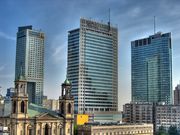
Poland's high-income economy[37] is considered to be one of the healthiest of the post-communist countries and is currently one of the fastest growing within the EU. Since the fall of the communist government, Poland has steadfastly pursued a policy of liberalising the economy and today stands out as a successful example of the transition from a centrally planned economy to a primarily capitalistic market economy. Poland is the only member of the European Union to have avoided a decline in GDP during the late 2000s recession. In 2009 Poland has had the greatest GDP growth in the EU. As of November 2009 the Polish economy has not entered the global recession of the late 2000s nor has it even contracted.[38][39]
The privatization of small and medium state-owned companies and a liberal law on establishing new firms have allowed the development of an aggressive private sector. As a consequence, consumer rights organizations have also appeared. Restructuring and privatisation of "sensitive sectors" such as coal, steel, rail transport and energy has been continuing since 1990. Between 2007 and 2010, the government plans to float twenty public companies on the Warsaw Stock Exchange, including parts of the coal industry. The biggest privatisations have been the sale of the national telecoms firm Telekomunikacja Polska to France Télécom in 2000, and an issue of 30% of the shares in Poland's largest bank, PKO Bank Polski, on the Polish stockmarket in 2004.
Poland has a large number of private farms in its agricultural sector, with the potential to become a leading producer of food in the European Union. Structural reforms in health care, education, the pension system, and state administration have resulted in larger-than-expected fiscal pressures. Warsaw leads Central Europe in foreign investment.[40] GDP growth had been strong and steady from 1993 to 2000 with only a short slowdown from 2001 to 2002.
The economy had growth of 3.7% annually in 2003, a rise from 1.4% annually in 2002. In 2004, GDP growth equaled 5.4%, in 2005 3.3% and in 2006 6.2%.[41] According to Eurostat data, Polish PPS GDP per capita stood at 61% of the EU average in 2009.[42]
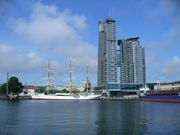
Although the Polish economy is currently undergoing economic development, there are many challenges ahead. The most notable task on the horizon is the preparation of the economy (through continuing deep structural reforms) to allow Poland to meet the strict economic criteria for entry into the Eurozone. According to the minister of finance Jacek Rostowski, Poland is likely to adopt the euro in 2012[43] or 2013.[44][45] Some businesses may already accept the euro as payment.
Average salaries in the enterprise sector in April 2008 were 3137 PLN (925 euro or 1434 US dollars)[46] and growing sharply.[47] Salaries vary between the regions: the median wage in the capital city Warsaw was 4,600 PLN (1,200 euro or 2,000 US dollars) while in Białystok it was only 2,400 PLN (670 euro or 1,000 US dollars).[48]
Since joining the European Union, many workers have left to work in other EU countries (particularly Ireland and the UK) because of high unemployment, which was the second-highest in the EU (14.2% in May 2006).[49] However, with the rapid growth of the salaries, booming economy, strong value of Polish currency, and quickly decreasing unemployment (6.7% in August 2008)[50] exodus of Polish workers seems to be over. In 2008 people who came back outnumbered those leaving the country.[51]
Commodities produced in Poland include: electronics, cars (including the luxurious Leopard car), buses (Autosan, Solaris, Solbus), helicopters (PZL Świdnik), transport equipment, locomotives, planes (PZL Mielec), ships, military engineering (including tanks, SPAAG systems), medicines (Polpharma, Polfa), food, clothes, glass, pottery (Bolesławiec), chemical products and others.
Poland is a part of the global tourism market with constantly increasing number of visitors, particularly after joining the European Union.[52] Tourism in Poland contributes to the country's overall economy. The most popular cities are Warsaw, Kraków, Wrocław, Poznań, Lublin, Toruń, including the historic site of the Auschwitz concentration camp near Oświęcim. Popular destinations include northeast Poland's Mazury lake district and Białowieża Forest. Poland's main tourist offers are sightseeing within cities and out-of-town historical monuments, business trips, qualified tourism, agrotourism, and mountain hiking, among others. Poland is the 17th most visited country by foreign tourists in 2008.[53]
Education, science and technology
Education and science
The education of Polish society was a goal of rulers as early as the 12th century, and Poland soon became one of the most educated European countries. The library catalogue of the Cathedral Chapter of Kraków dating back to 1110 shows that in the early 12th century Polish intellectuals had access to the European literature. In 1364 in Kraków, Jagiellonian University, founded by King Casimir III, became one of Europe's great early universities. In 1773 King Stanisław August Poniatowski established his Commission of National Education (Komisja Edukacji Narodowej), the world's first state ministry of education.

In the 19th and 20th centuries many Polish scientists worked abroad. The greatest was Maria Skłodowska-Curie, a physicist and chemist living in France. In the first half of the 20th century, Poland was a flourishing center of mathematics. Outstanding Polish mathematicians formed the Lwów School of Mathematics and Warsaw School of Mathematics.
Today Poland has more than a hundred tertiary education institutions; traditional universities to be found in its major cities, as well as technical, medical, and economic institutions, employing around 61,000 workers. There are around 300 research and development institutes, with about 10,000 researchers. In total, there are around 91,000 scientists in Poland today.
Research and development

According to Frost & Sullivan's Country Industry Forecast the country is becoming an interesting location for research and development investments.[55] Multinational companies such as: ABB, Delphi, GlaxoSmithKline, Google, Hewlett–Packard, IBM, Intel, LG Electronics, Microsoft, Motorola, Siemens and Samsung have set up research and development centres in Poland.[56] Over 40 research and development centers and 4,500 researchers make Poland the biggest research and development hub in Central and Eastern Europe.[55] Companies chose Poland because of the availability of highly qualified labor force, presence of universities, support of authorities, and the largest market in Central Europe.[55]
According to KPMG report[57] 80% of Poland's current investors are content with their choice and willing to reinvest. In 2006, Intel decided to double the number of employees in its research and development centre in Gdańsk.[56]
The Programme for International Student Assessment, coordinated by the OECD, currently ranks Poland's education as the 23rd best in the world, being neither significantly higher nor lower than the OECD average.[58]
Communications
The share of the telecom sector in the GDP is 4.4% (end of 2000 figure), compared to 2.5% in 1996. Nevertheless, despite high expenditures for telecom infrastructure (the coverage increased from 78 users per 1,000 inhabitants in 1989 to 282 in 2000).
The value of the telecommunication market is zl 38.2bn (2006), and it grew by 12.4% in 2007 PMR.[59] The coverage mobile cellular is over 1000 users per 1000 people (2007). Telephones—mobile cellular: 38.7 million (Onet.pl & GUS Report, 2007), telephones—main lines in use: 12.5 million (Telecom Team Report, 2005).
Culture
Famous people
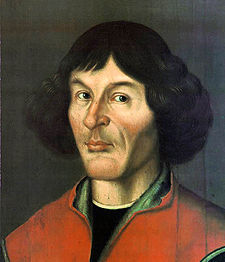
Poland is the birthplace of some world famous individuals, including Pope John Paul II, Marie Skłodowska Curie,[60] Tadeusz Kościuszko, Kazimierz Pułaski, Józef Piłsudski, Nicolaus Copernicus[61] and Frederick Chopin.[62][63]
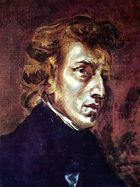
The character of Polish art has reflected world trends. Painter Jan Matejko included many significant historical events in his paintings. Stanisław Ignacy Witkiewicz was an example of a Polish Renaissance Man, along with the playwright, painter and poet Stanisław Wyspiański.
Polish literature dates back to the 12th century[64] and includes many famous poets and writers such as Jan Kochanowski, Adam Mickiewicz, Bolesław Prus, Juliusz Słowacki, Witold Gombrowicz, Stanisław Lem and, Ryszard Kapuściński. Writers Henryk Sienkiewicz, Władysław Reymont, Czesław Miłosz, Wisława Szymborska have each won the Nobel Prize in Literature. Also a renowned Polish-born English novelist was Joseph Conrad.[65]
Many world famous Polish movie directors include Academy Awards winners Roman Polański, Andrzej Wajda, Zbigniew Rybczyński, Janusz Kamiński, Krzysztof Kieślowski, Agnieszka Holland. World renowned actresses were Helena Modjeska and Pola Negri.
Music
|
Polonaise & Mazurka
|
Artists from Poland, including famous composers like Chopin or Penderecki and traditional, regionalized folk musicians, create a lively and diverse music scene, which even recognizes its own music genres, such as poezja śpiewana and disco polo. As of 2006, Poland is one of the few countries in Europe where rock and hip hop dominate over pop music, while all kinds of alternative music genres are encouraged.
Cuisine

Polish cuisine has both influenced and been influenced by the cuisines of surrounding countries. For centuries the Polish kitchen has been the arena for competing influences from France and Italy, while it also borrowed extensively from more exotic tables: Tartar, Armenian, Lithuanian, Cossack, Hungarian and Jewish.[66] It is rich in meat, especially chicken and pork, and winter vegetables (cabbage in the dish bigos), and spices, as well as different kinds of noodles the most notable of which are the pierogi. It is related to other Slavic cuisines in usage of kasza and other cereals. Generally speaking, Polish cuisine is hearty. The preparation of traditional cuisine generally is time intensive and Poles allow themselves a generous amount of time to prepare and enjoy their festive meals, with some meals (like Christmas eve or Easter breakfast) taking a number of days to prepare in their entirety.
Notable foods in Polish cuisine include kiełbasa, barszcz, pierogi, flaczki (tripe soup), gołąbki, oscypek, pork chops, bigos, various potato dishes, a fast food sandwich (zapiekanka) and many more.[66] Traditional Polish desserts include pączki, gingerbread and others.
Architecture

Polish cities and towns reflect the whole spectrum of European styles. Romanesque architecture is represented by St. Andrew's Church in Kraków, and characteristic for Poland Brick Gothic by St. Mary's Church in Gdańsk. Richly decorated attics and arcade loggias are the common elements of the Polish Renaissance architecture,[67][68] like in City Hall in Poznań. For some time the late renaissance, so called mannerism, most notably in Bishop’s Palace in Kielce, coexisted with the early baroque like in Church of SS. Peter and Paul in Kraków.
The second half of the 17th century is marked by baroque architecture. Side towers, visible in Branicki Palace in Białystok are typical for Polish baroque. The classical Silesian baroque is represented by the University in Wrocław. Profuse decorations of Branicki Palace in Warsaw are characteristic of rococo style. The center of Polish classicism was Warsaw under the rule of the last Polish king Stanisław August Poniatowski.[69] The Palace on the Water is the most notable example of Polish neoclassical architecture. Lublin Castle represents the Gothic Revival style in architecture, while the Izrael Poznański Palace in Łódź is an example of eclecticism.
Sports

Many sports are popular in Poland. Football (soccer) is the country's most popular sport, with a rich history of international competition. Track and field, basketball, boxing, ski jumping, fencing, handball, ice hockey, swimming, volleyball, and weightlifting are other popular sports. The golden era of football in Poland occurred throughout the 1970s and went on until the early 1980s when the Polish national football team achieved their best results in any FIFA World Cup competitions finishing 3rd place in the 1974 and 1982 editions. The team won a gold medal in football at the 1972 Summer Olympics and also won two silver medals in 1976 and 1992. Poland, along with Ukraine, will host the UEFA European Football Championship in 2012.
The Polish men's national volleyball team is ranked 5th in the world and the women's volleyball team is ranked 10th. Mariusz Pudzianowski is a highly successful strongman competitor and has won more World's Strongest Man titles than any other competitor in the world, winning the event in 2008 for the fifth time. The first Polish Formula One driver, Robert Kubica, has brought awareness of Formula One Racing to Poland. Poland has made a distinctive mark in motorcycle speedway racing thanks to Tomasz Gollob, a highly successful Polish rider. The national speedway team of Poland is one of the major teams in international speedway and is very successful in various competitions.
The Polish mountains are an ideal venue for hiking, skiing and mountain biking and attract millions of tourists every year from all over the world. Baltic beaches and resorts are popular locations for fishing, canoeing, kayaking and a broad-range of other water-themed sports.
International rankings
The following are links to international rankings of Poland.
| Index | Rank | Countries reviewed |
|---|---|---|
| Human Development Index 2007 | 37th | 177 |
| OECD Working time | 2nd | 27 |
| Index of Economic Freedom 2008 | 83rd | 157 |
| Privacy International Yearly Privacy ranking of countries, 2007 | 19th | 45 |
| Reporters Without Borders Press Freedom Index 2009 | 37th | 175 |
| UNICEF Child Well-being league table | 14th | 21 |
| Networked Readiness Index 2009–2010 | 65th | 133 |
| OICA Automobile Production | 18th | 53 |
See also
- List of Poles
- Polish British
- Polish American
References and notes
- ↑ "Wzrasta liczba ludności Polski - Wiadomości - WP.PL". Wiadomosci.wp.pl. 2010-07-23. http://wiadomosci.wp.pl/kat,1347,title,Wzrasta-liczba-ludnosci-Polski,wid,12502858,wiadomosc.html. Retrieved 2010-07-27.
- ↑ 2.0 2.1 2.2 2.3 2.4 2.5 2.6 2.7 2.8 "Concise Statistical Yearbook of Poland, 2008" (PDF). Central Statistical Office (Poland). 28 July 2008. http://www.stat.gov.pl/cps/rde/xbcr/gus/PUBL_maly_rocznik_statystyczny_2008.pdf. Retrieved 2008-08-12.
- ↑ 3.0 3.1 3.2 3.3 "Poland". International Monetary Fund. http://www.imf.org/external/pubs/ft/weo/2010/01/weodata/weorept.aspx?sy=2007&ey=2010&scsm=1&ssd=1&sort=country&ds=.&br=1&c=964&s=NGDPD%2CNGDPDPC%2CPPPGDP%2CPPPPC%2CLP&grp=0&a=&pr.x=86&pr.y=13. Retrieved 2010-04-21.
- ↑ [1]. The United Nations. Retrieved 05 October 2009.
- ↑ http://unstats.un.org/unsd/geoinfo/gegn23wp48.pdf
- ↑ https://www.cia.gov/library/publications/the-world-factbook/geos/pl.html
- ↑ NationMaster.com 2003–2007, Poland, Facts and figures
- ↑ Polenia by Thietmar of Merseburg Chronicle, 1002. (German: Polen}
- ↑ Polani by John Canaparius, Vita sancti Adalberti episcopi Pragensis, or Life of St. Adalbert of Prague, 999.
- ↑ Teeple, J. B. (2002). Timelines of World History. Publisher: DK Adult.
- ↑ "Jagiellon dynasty (European history)". Encyclopædia Britannica.
- ↑ Davies (2007). Warfare, State and Society on the Black Sea Steppe,1500–1700.. p.17.
- ↑ "The Crimean Tatars and their Russian-Captive Slaves" (PDF). Eizo Matsuki, Mediterranean Studies Group at Hitotsubashi University.
- ↑ "Poland – The 17th-century crisis". Britannica Online Encyclopedia.
- ↑ "European Refugee Movements After World War Two". BBC - History.
- ↑ (English) "Merkel honours Polish freedom struggle and Tiananmen victims". www.thelocal.de. AFP. http://www.thelocal.de/politics/20090604-19717.html. Retrieved 2009-09-28.
- ↑ "Real GDP growth in CEECs". Transitioneconomies.blogspot.com. 2006-05-28. http://transitioneconomies.blogspot.com/2006/05/real-gdp-growth-in-ceecs.html. Retrieved 2009-05-06.
- ↑ "WHY POLAND?" (PDF). http://polisci.lsa.umich.edu/documents/jjackson/chapt1.pdf. Retrieved 2009-07-08.
- ↑ "Poland.pl – White Stork – About White Stork". Storks.poland.pl. http://storks.poland.pl/about_stork/index.htm. Retrieved 2009-05-06.
- ↑ (Polish) "Wybrzeże Morza Bałtyckiego". www.zalewszczecinski.net. http://zalewszczecinski.net/akweny/wybrzeze-morza-baltyckiego. Retrieved 2009-11-16.
- ↑ 21.0 21.1 21.2 (Polish) "Strategia Bezpieczeństwa Narodowego RP" (PDF). www.wp.mil.pl. http://www.wp.mil.pl/pliki/File/zalaczniki_do_stron/SBN_RP.pdf. Retrieved 2008-09-26.
- ↑ A Short History of the Lipka Tatars of the White Horde Jakub Mirza Lipka
- ↑ [2] The situation of modern language learning and teacing in Europe: Poland
- ↑ "UK lets in more Poles than there are in Warsaw". London: Dailymail.co.uk. 2006-04-25. http://www.dailymail.co.uk/news/article-384121/UK-lets-Poles-Warsaw.html. Retrieved 2010-04-12.
- ↑ Tide turns as Poles end great migration
- ↑ "Polish Diaspora (Polonia) Worldwide". Culture.polishsite.us. http://culture.polishsite.us/articles/art79fr.htm. Retrieved 2010-04-12.
- ↑ "Centers of Polish Immigration in the World – USA and Germany". Culture.polishsite.us. 2003-03-15. http://culture.polishsite.us/articles/art90fr.htm. Retrieved 2010-04-12.
- ↑ "Maly Rocznik Statystyczny Polski 2009" (in (Polish)) (PDF). http://www.stat.gov.pl/cps/rde/xbcr/gus/PUBL_oz_maly_rocznik_statystyczny_2009.pdf. Retrieved 2009-09-26.
- ↑ "''94% Polaków wierzy w Boga''". Ekumenizm.pl. 2008-09-25. http://www.ekumenizm.pl/content/article/20080925183042429.htm. Retrieved 2010-04-12.
- ↑ Weekly Mass Attendance of Catholics in Nations with Large Catholic Populations, 1980–2008 – World Values Survey (WVS)
- ↑ (Polish) Centrum Badania Opinii Społecznej (Centre for Public Opinion Research (Poland) CBOS). Komunikat z badań; Warszawa, Marzec 2005. Co łączy Polaków z parafią? Preface. Retrieved 2007-12-14.
- ↑ (Polish) Dr Zbigniew Pasek, Jagiellonian University, "Wyznania religijne". http://www.religioznawstwo.uj.edu.pl/syllabusy/pasek-wrwp.rtf. Retrieved 2007-09-15. Further reading: Ustawa o gwarancjach wolności sumienia i wyznania z dnia 17 V 1989 z najnowszymi nowelizacjami z 1997 roku.
- ↑ (Polish) Michał Tymiński, "Kościół Zielonoświątkowy". http://www.kz.pl/index.php?p=13&id=3&i=8. Retrieved 2007-09-14.
- ↑ (Polish) Dr. Paweł Borecki, "Opinia prawna dotycząca religii w szkole". Kateda Prawa Wyznaniowego Uniwersytetu Warszawskiego. http://www.racjonalista.pl/kk.php/s,5534. Retrieved 2007-09-14.
- ↑ (Polish) Wirtualna Polska, Wiadomości. "Polacy przeciwni wliczaniu ocen z religii do średniej". http://wiadomosci.wp.pl/kat,9911,wid,9125933,wiadomosc.html?ticaid=1478d. Retrieved 2007-09-14.
- ↑ (Polish) Olga Szpunar, "„Dorośli chcą religii w szkole”". Gazeta Wyborcza Kraków. http://miasta.gazeta.pl/krakow/1,35798,4360977.html. Retrieved 2007-09-15.
- ↑ http://data.worldbank.org/about/country-classifications/country-and-lending-groups#High_income
- ↑ "Central Europe Risks Downgrades on Worsening Finances (Update1)". Bloomberg.com. 2009-09-21. http://www.bloomberg.com/apps/news?pid=newsarchive&sid=apz_BEuHrNpI. Retrieved 2010-01-27.
- ↑ "Zloty to Gain, Says LBBW, Most Accurate Forecaster (Update1)". Bloomberg.com. 2009-10-09. http://www.bloomberg.com/apps/news?pid=newsarchive&sid=a7k1g_PkuROs#. Retrieved 2010-01-27.
- ↑ "Poland in the Lead", The Warsaw Voice, September 2002. Retrieved on August 11, 2007.}}
- ↑ "Polish Information and Foreign Investment Agency. News". www.paiz.gov.pl. http://www.paiz.gov.pl/nowosci/?id_news=1297&lang_id=12. Retrieved 2008-09-26.
- ↑ "GDP per capita in PPS". Eurostat. http://epp.eurostat.ec.europa.eu/tgm/table.do?tab=table&init=1&plugin=1&language=en&pcode=tsieb010. Retrieved 2010-06-25.
- ↑ Gazeta Wyborcza, "Szejnfeld: Wejście do strefy euro korzystne dla przedsiębiorców
- ↑ Jan Cienski, "Poland Alters Stance on Euro
- ↑ L'economia va. Investimenti stranieri e Fondi UE. Una chance imperdibile per l'ammodernamento EuropaRussia 30.05.2010.
- ↑ "OECD Economic Outlook No. 82 – Poland" (in (Polish)). Stat.gov.pl. http://www.stat.gov.pl/gus/45_1786_ENG_HTML.htm. Retrieved 2010-04-12.
- ↑ "OECD Economic Outlook No. 82 – Poland" (PDF). http://www.oecd.org/dataoecd/6/32/20213254.pdf. Retrieved 2010-04-12.
- ↑ Arkadiusz Koperek. "Zarobki w Warszawie w 2007 roku". Praca.gazeta.pl. http://praca.gazeta.pl/gazetapraca/1,74785,4988030.html. Retrieved 2010-04-12.
- ↑ Eurostat September 2007 – Euro area and EU27 unemployment down to 7.3%, 31 October, 2007
- ↑ Eurostat February 2008 – Euro area unemployment stable at 7.1%
- ↑ The Times: Tide turns as Poles end great migration
- ↑ (English) "Travel And Tourism in Poland". www.euromonitor.com. http://www.euromonitor.com/Travel_And_Tourism_in_Poland. Retrieved 2009-10-12.
- ↑ (English) "UNTWO World Tourism Barometer, Vol.5 No.2". www.tourismroi.com. http://www.tourismroi.com/Content_Attachments/27670/File_633513750035785076.pdf. Retrieved 2009-10-12.
- ↑ (English) Richard Francis Mould (1993). A century of X-rays and radioactivity in medicine: with emphasis on photographic records of the early years. p. 19. ISBN 07-50302-24-0. http://books.google.com/?id=IXPz7bVR7g0C&printsec=frontcover&dq=A+century+of+x-rays+and+radioactivity+in+medicine:&q=.
- ↑ 55.0 55.1 55.2 Newswire Poland Emerges as the European R&D Hub Despite Favorable Conditions in Asia Pacific
- ↑ 56.0 56.1 Polish Information and Foreign Investment Agency Poland – R&D centre
- ↑ KPMG, Why Poland?
- ↑ (English) "Range of rank on PISA 2006 science scale" (PDF). www.oecd.org. http://www.oecd.org/dataoecd/42/8/39700724.pdf. Retrieved 2008-09-24.
- ↑ (English) "Key data on IT and telecoms market in Poland, 2004–2006". www.itandtelecompoland.com. Archived from the original on 2006-11-08. http://web.archive.org/web/20061108212651/http://www.sat.org.au/reviews/articles_pl_middle_ages.htm. Retrieved 2008-09-24.
- ↑ (French) "Maria Sklodowska. La jeunesse". mariecurie.science.gouv.fr. http://mariecurie.science.gouv.fr/portrait/portrait1_1.php. Retrieved 2008-10-10.
- ↑ (English) "Nicolaus Copernicus". www.britannica.com. http://www.britannica.com/EBchecked/topic/136591/Nicolaus-Copernicus. Retrieved 2008-10-10.
- ↑ (French) Rey Alain (1993). Le petit Robert 2 : ( dictionnaire universel des noms propres, alphabétique et analogique ). INIST-CNRS, Cote INIST : L 22712: Le Robert, Paris, FRANCE. ISBN 2-85036-210-7.
- ↑ (English) Michael Kennedy, ed (2004). The Concise Oxford dictionary of music. Oxford University Press. ISBN 0-19-860884-5. p. 141
- ↑ (Polish) Koca, B. (2006). "Polish Literature – The Middle Ages (Religious writings)". Archived from the original on 2006-11-08. http://web.archive.org/web/20061108212651/http://www.sat.org.au/reviews/articles_pl_middle_ages.htm. Retrieved 10 December 2006.
- ↑ (English) Zdzislaw Najder (1998). "Profiles – Joseph Conrad". www.culture.pl. http://www.culture.pl/en/culture/artykuly/os_conrad_joseph. Retrieved 2008-09-30.
- ↑ 66.0 66.1 (English) "Polish regional table". www.pl-info.net. http://www.pl-info.net/poland/culture/cuisine/. Retrieved 2009-04-20.
- ↑ (English) "Szydłowiec". www.szydlowiec.pl. p. 9. http://www.szydlowiec.pl/grafika/index/szydl1.pdf. Retrieved 2009-04-23.
- ↑ Many designs imitated the arcaded courtyard and arched loggias of the Wawel palace. (English) Michael J. Mikoś. "RENAISSANCE CULTURAL BACKGROUND". www.staropolska.pl. p. 9. http://www.staropolska.pl/ang/renaissance/Mikos_renaissance/Cultural_r.html. Retrieved 2009-04-23.
- ↑ (English) John Stanley (March–June 2004). "Literary Activities and Attitudes in the Stanislavian Age in Poland (1764–1795): A Social System?". findarticles.com. http://findarticles.com/p/articles/mi_qa3763/is_200403/ai_n9363971/?tag=content;col1. Retrieved 2009-04-23.
External links
- Movie (on-line)
- General
- Poland.gov.pl – Polish national portal
- Polish Information
- Ministry of Foreign Affairs
- Chief of State and Cabinet Members
- Poland entry at The World Factbook
- Poland at UCB Libraries GovPubs
- History of Ancient Poland
- Poland at the Open Directory Project
- Wikimedia Atlas of Poland
- Culture
- Travel
- Poland travel guide from Wikitravel
- Poland's Official Travel Website
- About Poland
- Touch of Polish - A beginners' guide to the Polish language, BBC Radio
- Photos from Poland
|
||||||||||||||||||||||||||||||||||||||||||||||||||||||||||||||||||||||||||||||||||||||||||||||||||||||||||||||||||||||||||||||||||||||||||||||||||



.jpg)

